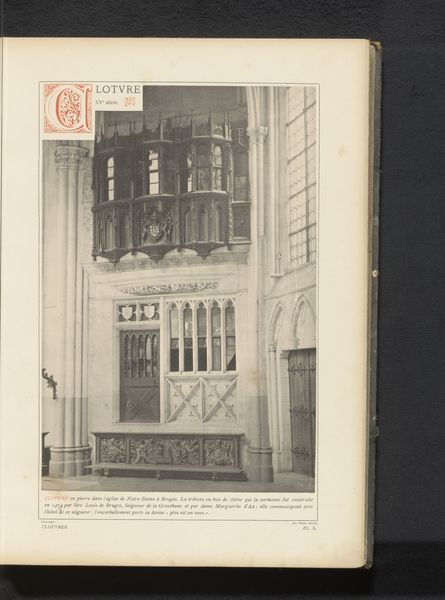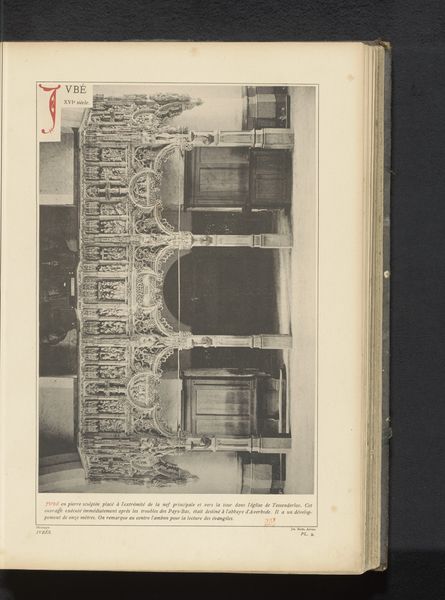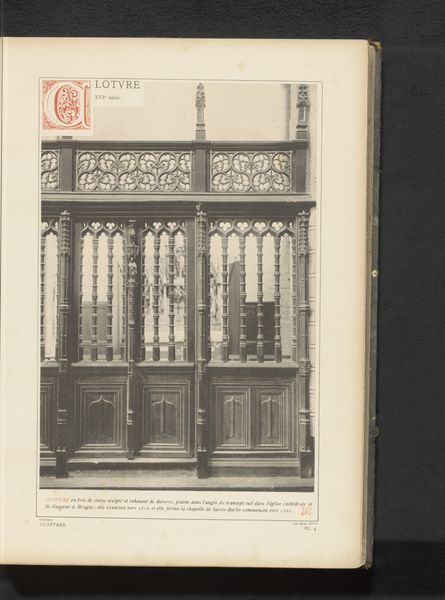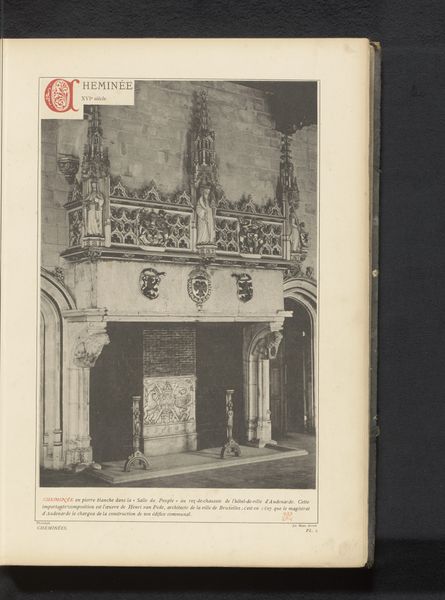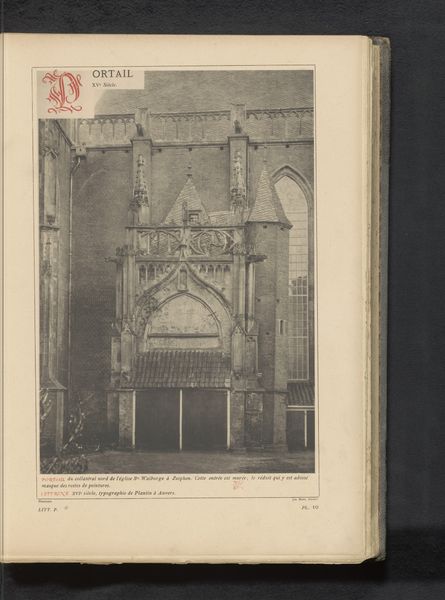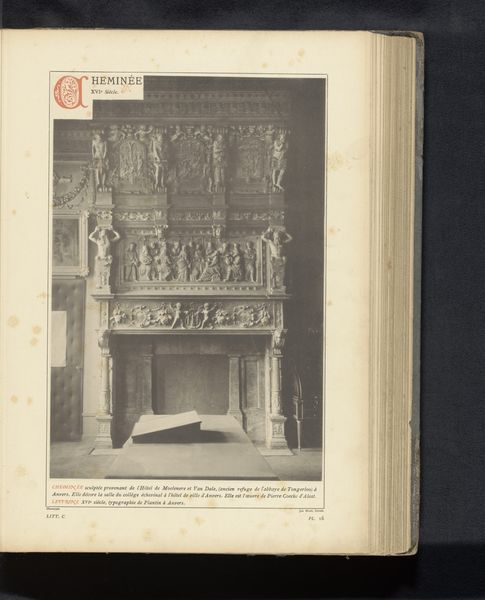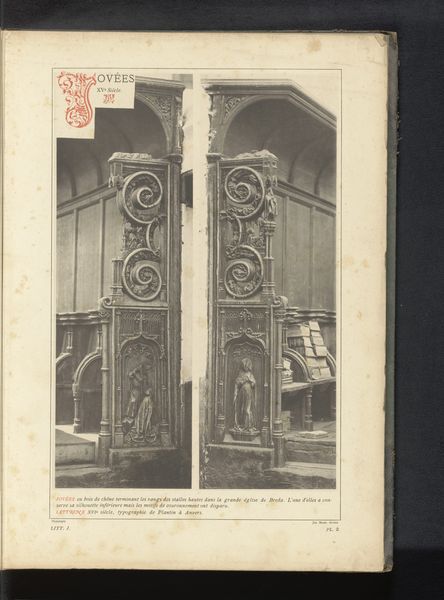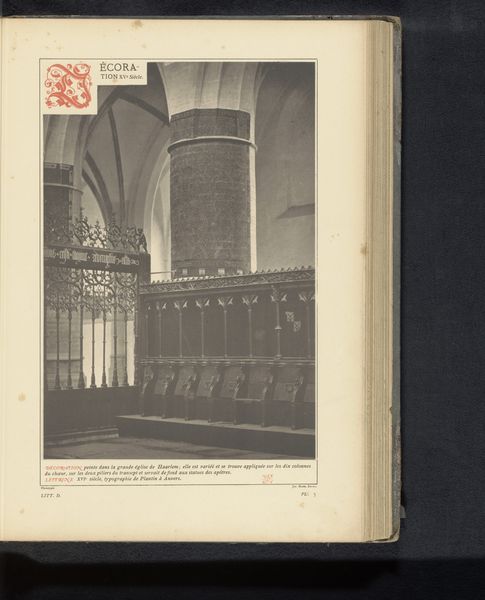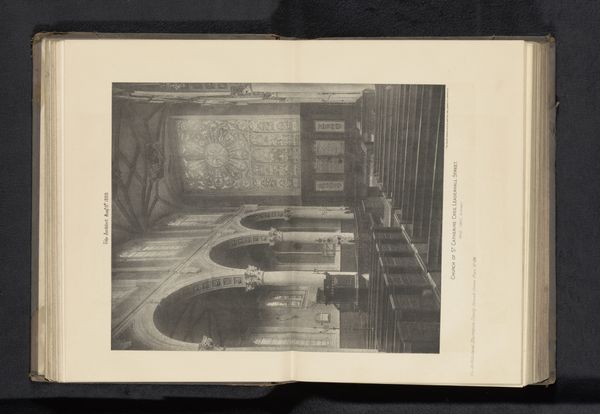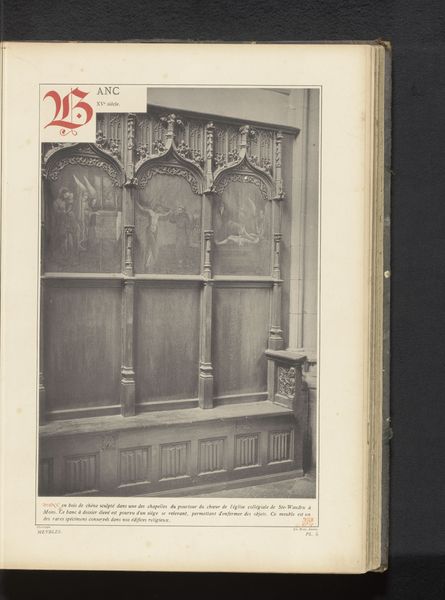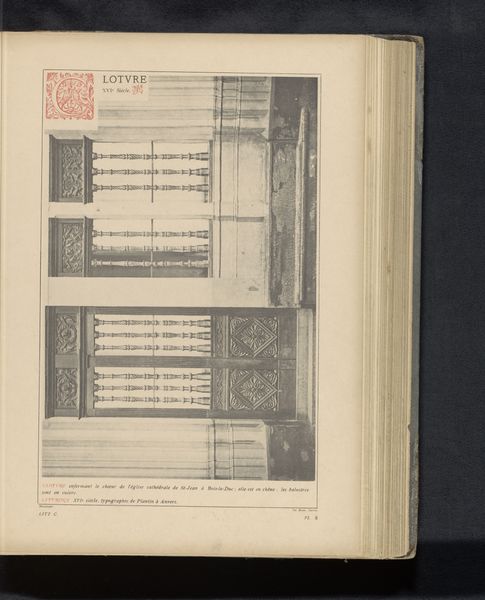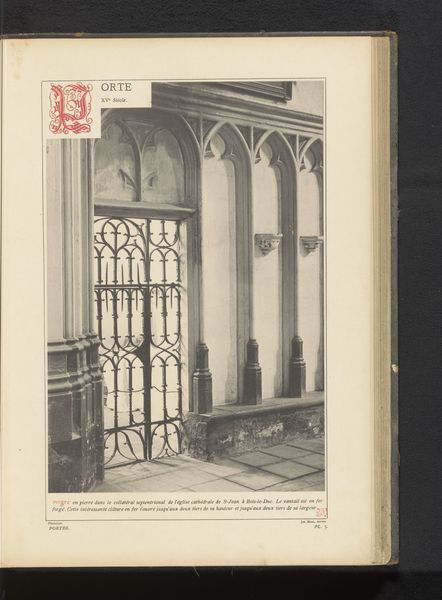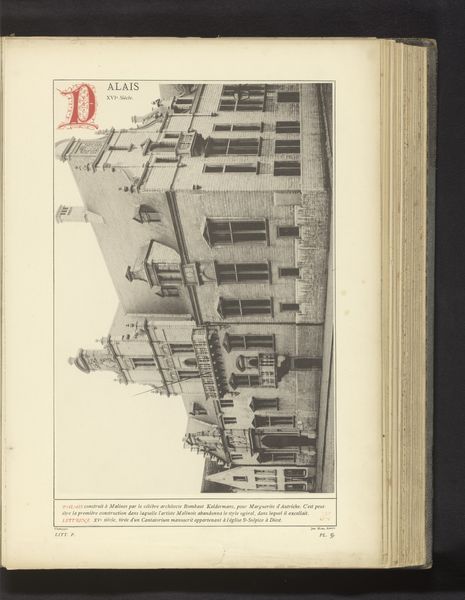
print, photography, architecture
#
medieval
# print
#
figuration
#
photography
#
architecture
#
realism
Dimensions: height 339 mm, width 229 mm
Copyright: Rijks Museum: Open Domain
Curator: At first glance, this image exudes a sense of both weightiness and delicate beauty. The pale tones and elaborate structure convey an almost ethereal quality, juxtaposed with a strong vertical emphasis and solid forms. Editor: We're looking at a print, likely a photographic reproduction, of the "Preekstoel in de Bovenkerk te Kampen"—or the Pulpit in the Upper Church of Kampen. It dates to before 1880 and captures the architecture with what looks like realism and perhaps a touch of medievalism given its age and appearance. Curator: Realism indeed, in that the details are rendered quite faithfully. And Medievalism absolutely, given its subject and possible ties to gothic and baroque sensibilities. Note how the ornateness and sculptural program point towards something beyond pure function. Ponder, for instance, the light and shadows: Do they evoke spiritual introspection? Editor: The interplay between the shadows and the architectural details are fascinating. They reveal the stratified social hierarchies inherent within religious spaces. Who has access to this elevated space? Who is given the authority to speak from it? These were carefully curated positions in the power dynamics of the church and society. Curator: Absolutely! Think about the careful symbolic intent invested in religious structures, the weight of tradition carried by this form. It is reminiscent of the Tower of Babel, except where people hear, learn and understand. Editor: Speaking of traditions, I'm wondering about accessibility here. While architecture seeks to serve its constituents, we must be attentive to whom. Disability studies makes me consider that while there is a staircase there isn't another entry point; only the most able-bodied will make it to the top. What is lost in these omissions? What social implications do these decisions encode? Curator: What powerful questions to raise! I think one thing is for certain: The builders intentionally placed this space so high up, indicating that some things are sacred and need some effort and struggle to attain. These can indeed serve as powerful messages when engaging with art that contains culturally significant references. Editor: Indeed, the climb signifies not only physical ability but also a preparedness to enter into these spaces to become something 'more'. Viewing such structures requires both reverence and questioning in order to grasp its implications. Curator: Agreed. This photographic capture makes you think deeply about time, authority, and access! Editor: The experience of looking at the work does indeed open questions for us today, prompting examination about the place of architecture, history, access, and politics.
Comments
No comments
Be the first to comment and join the conversation on the ultimate creative platform.
